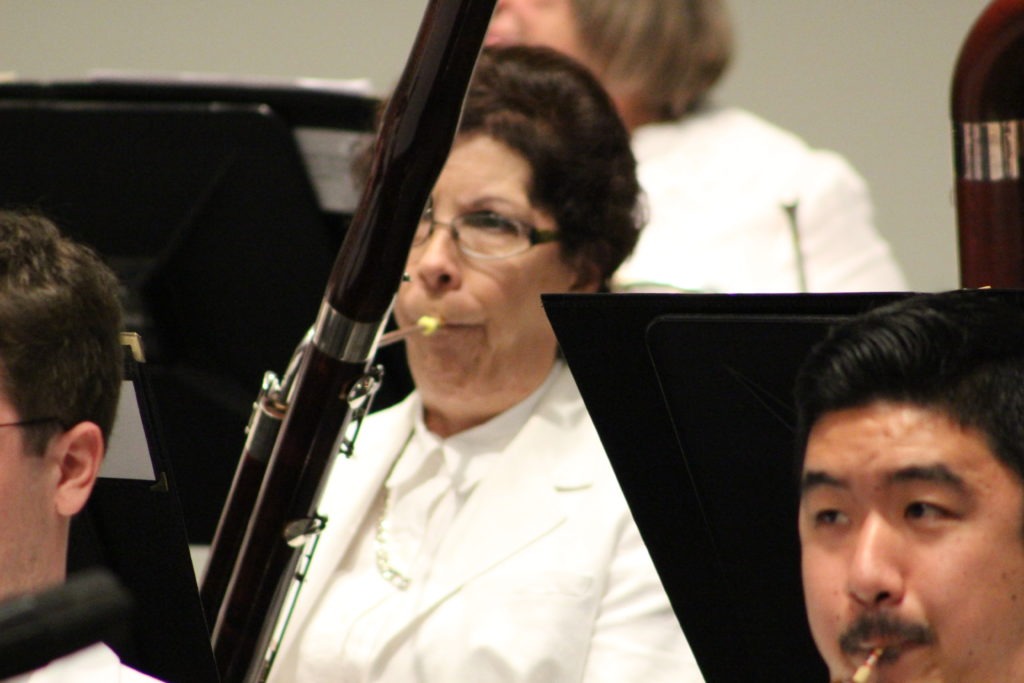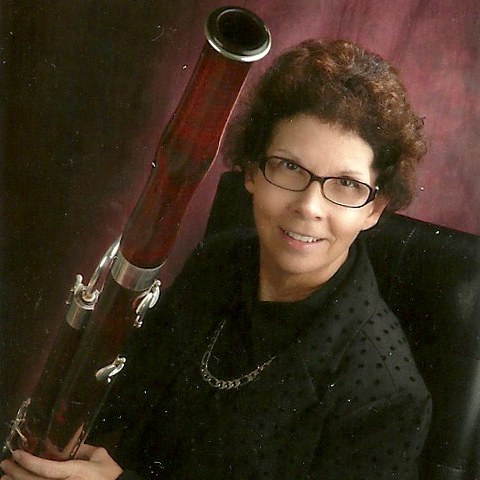Bassoonist Stacey Gossmann Fights Back Death to Live to Play Another Day

Idaho-born Stacey Gossmann began her musical life as do many of us – in elementary school. But unlike many of us, the Gulf Coast Symphony’s principal bassoonist spent years clawing back from the edge of death to go on to play another day.
Born to a trumpet-playing physicist dad and a pianist mother who ran major musical and theatre productions in Idaho, Stacey Gossmann started out on the cello and shortly thereafter embraced the bassoon.
After a freshman year majoring in music at Idaho State University, Stacey won a place at the Cleveland Institute of Music, a top U.S. conservatory. There, Stacey studied with George Goslee, then-principal bassoonist with Cleveland Orchestra. And after three years, she walked…well…flew away with a Bachelor’s degree in Music.
Stacey traveled to Germany for a post-graduation visit with her sister Sharyl, who lived in Krefeld, where she performed with a dance company. “I was there for six weeks, and it was really exciting. So I returned home, packed everything up and went back to Germany,” Stacey says.
That was the late 1970s, when it was hard enough to land a bassoon job in the U.S., let alone in another country with another language. Yet Stacey found paid work substituting for the Niederrheinische Sinfoniker, an orchestra twinned with her sister’s dance troupe. In Germany, professional orchestras often are tied to ballet, theater and opera companies, all supporting each other under one roof.
Despite obvious hurdles, Stacey managed. “Playing in Germany was pretty much the same as playing in the U.S., except they speak German.” Stacey could speak a bit of the local lingo. But at the end of the day, she says, “in the orchestras you play and don’t really talk much. It’s pretty straight forward.”
Still, music was only a bit of side action for Stacey, who paid the rent by working for a German industrial company and later by teaching English at a school.
After four years in Krefeld, Stacey returned to Cleveland to work on a Masters degree in music. “I decided I didn’t want to be teaching English for the rest of my life, and I had been in Germany for four years and hadn’t found a full-time orchestra job, so I went back.”
Stacey took a year and a half to earn her Masters at the Cleveland Institute. She covered her bills by working part-time at technology giant Xerox. And with decent-paying bassoonist jobs still scarce, she stayed at the company, moving into management and eventually to its offices in Rochester, N.Y., where she earned an MBA at Rochester Institute of Technology.
Her career at Xerox took her away from music for a couple decades, a hiatus many community orchestra members accept as they build careers and families.
Life Strikes With Vengence
It was August 1999 in Rochester, when life showed its cruel hand. It struck Stacey with a brain aneurysm, pulling her to the brink of death and into years of surgeries, comas, life threatening infections and paralysis. Truly a dark period. “From three or four months before the aneurysm and for two years after, I still don’t remember anything.”
Stacey’s sister Sharyl Leifeld, who plays violin for the Gulf Coast Symphony, picks up the narrative from there: While heading to work early in the morning, Stacey became disoriented and incoherent. She was taken to the city’s main hospital, where doctors called for life-saving measures. “It was a 12-hour surgery the next day. It was touch-and-go, very difficult.”
The next six months were nightmarish for Stacey and Sharyl, who with her dancing days behind her had relocated to Fort Myers, though she camped out for months in Rochester to be with her hospitalized sister.
Circumstances compelled Sharyl to learn as much as possible to understand Stacey’s complicated and dangerous condition and to deal with doctors. “I wasn’t trained in medicine. But I had to manage Stacey’s care and deal with secretive doctors and staff.”
In the ensuing months, Stacey suffered complete and partial paralysis, vascular and coronary problems, seizures, recurring life-threatening infections, and she withstood multiple procedures on her brain.
With Stacey’s condition seemingly worsening, unanswered questions mounted. Sharyl, who by then had been appointed her sister’s legal guardian, says doctors expressed little hope.
After five unsuccessful procedures to correct an implanted brain shunt that was causing life-threatening infections, doctors said a sixth attempt was necessary to keep Stacey alive. But Sharyl says she stopped a further potentially debilitating surgery and insisted the hospital find a non-invasive way to eradicate the infection. “I told them that if she died as a result, so be it, because at that rate, she was going to die anyway. It was the hardest thing I’ve ever had to do.”
That move was for the best. In the following months, doctors were able to free Stacey of any shunts and stabilize her enough so that Sharyl and her husband Klaus could move her to Fort Myers to live with them and resume medical treatment.
A Change in Scene
That was in 2000, and Stacey was still far from recovery, gripped by intermittent organ failure, partial paralysis, seizures and heart problems. She was unable to talk and was prescribed mounting medications to treat continuing and new afflictions. “She had to be tied in the wheel chair. She couldn’t sit up, or anything,” Sharyl says.
Stacey’s case was so complicated, that the family had difficulty finding a primary care doctor willing to oversee her treatment, Sharyl says.
Without much improvement in Stacey’s condition, Sharyl and the doctors took a radical approach: Take Stacey off all medications. That move raised eyebrows in the Fort Myers medical community, but it succeeded. “Gradually, I weaned her off all of that, and then she got better and better and better. She basically takes just vitamins and some heart medication today,” Sharyl says.
In 2002, Stacey had recovered to the point where she could stand and more-or-less work her limbs, though she still had trouble speaking. As a therapy, she re-engaged with the bassoon, taking lessons at the then-Edison College and joining its orchestra. “It was like starting out again. And my right hand was still giving me trouble, I couldn’t feel much with it,” Stacey says.
Those early years in Fort Myers remain fuzzy in Stacey’s mind. “I don’t remember much about when I started the bassoon again, but I know I enjoyed playing. I had to practice a lot, but that was good.”
And she had help. Her musical rebirth was guided by teacher Kristen Sonneborn, principal bassoonist with Naples Philharmonic.
Stacey also attended the Toastmasters International public speaking and leadership group for several years to recover her speaking faculties and gain confidence. “People meet Stacey today, and they can’t even image what it was like before,” Sharyl says.
A Match Made in Fort Myers
In 2005, Stacey found the Gulf Coast Symphony. Or rather, it found her. “I was asked if I could play a concert. Afterwards, Andrew (Kurtz, GCS music director) came up to me and asked if I would like to play the next year. So I said: yes.” The rest is history.
Stacey has played with other ensembles in the area, such as the Naples Orchestra and Chorus and the Charlotte Symphony. Five years ago, she resumed playing cello to strengthen her right arm. She continues with the FSW orchestra and has taught bassoon to youngsters. She also is associated with the Music Foundation of Southwest Florida, which helps school-age children to learn to play music.
Away from music, Stacey is a canine enthusiast who walks dogs and cares for them from time to time for people on vacation. “I’m not getting paid very much. But it’s really a lot of fun.” She’s dog proud, with her Cavalier St. Charles Spaniel ‘Missy.’
“Throughout my life, I’ve been determined to do what I needed to do to improve it. So when I fell ill, I just had to get better,” Stacey Says.
By Art Mooradian

